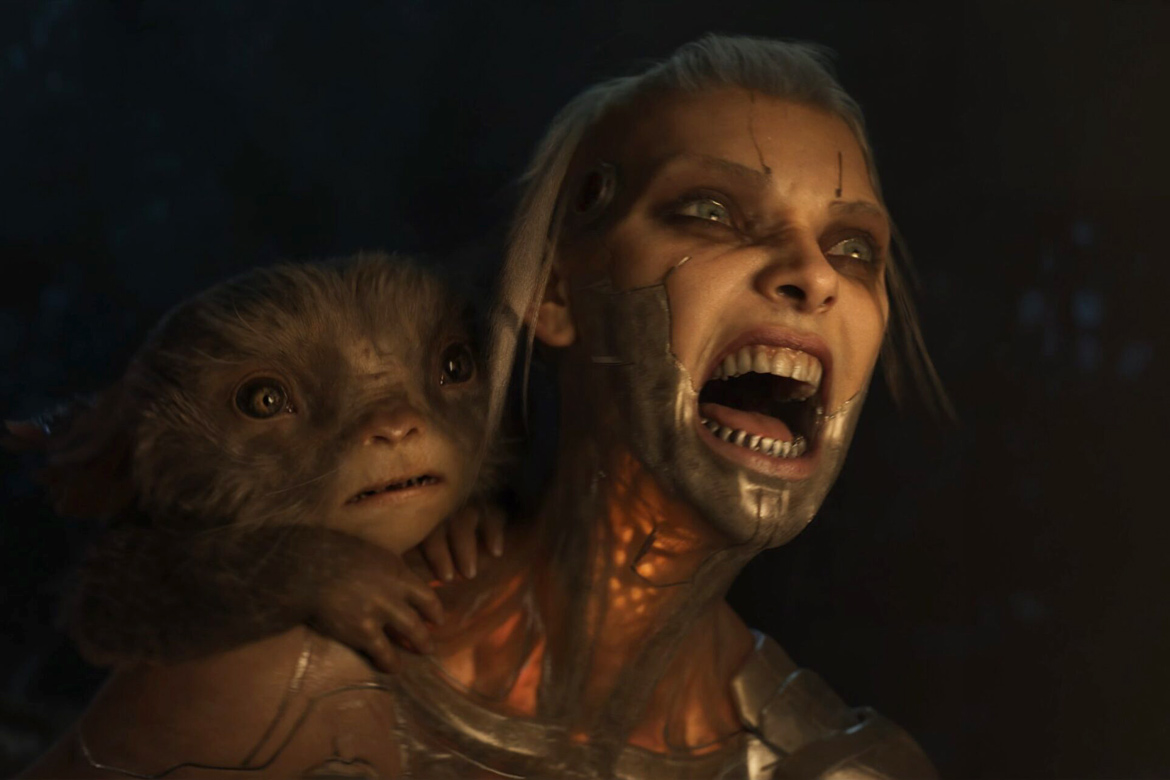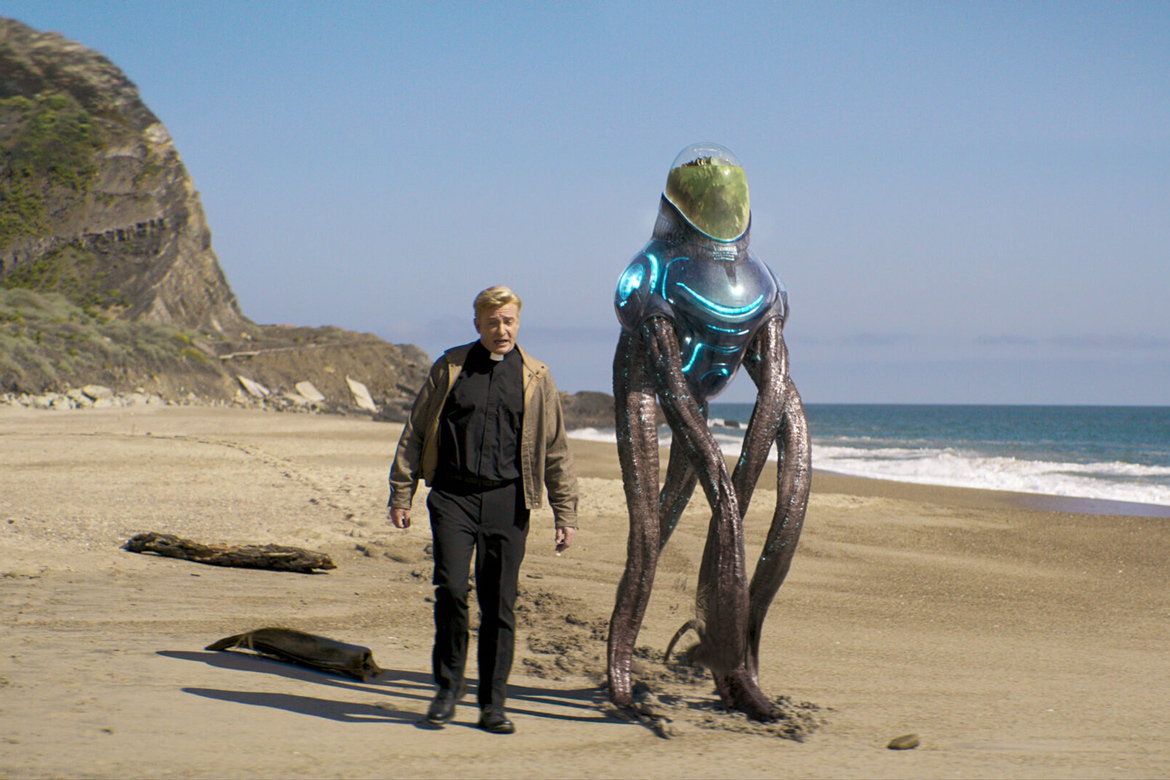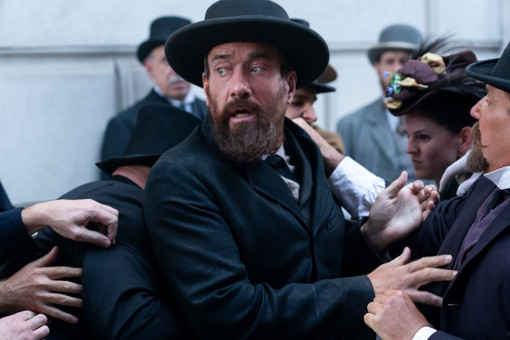It took nearly two decades and one Deadpool movie to help bring Netflix's Love Death + Robots to life.
Tim Miller (Deadpool) — along with fellow executive producer David Fincher (Mindhunter, Mank) — met in 2004, thanks to Miller's work as cofounder of visual effects house Blur Studio. Their initial conversation about the animated sci-fi anthology series that would earn Miller two Emmy awards for Outstanding Short Form Animated Program stemmed from a pitch Miller had for another gritty animated property.
"This show was originally conceived as a [TV version] of Heavy Metal," Miller explains to the Television Academy. 1981’s Heavy Metal, directed by Gerald Potterton, is an R-rated sci-fi fantasy feature film anthology full of bizarre and violently fantastic stories. The cult film, which plays like a 1970s airbrushed van mural in movie form, left quite an impression on Miller’s self-proclaimed nerd heart. But Hollywood didn’t bite.
"Fincher and I tried to get it made. He was like, 'I like your studio. I want to help you. What do you want to do?’”
At the time, Miller was also interested in expanding upon his 2003 animated short film, Rockfish, which was then in development at 20th Century Fox. But when that didn’t work out either, Miller found a way to turn some of those original ideas from the Heavy Metal Pitch into episodes of Love Death + Robots.
“My [original] pitch was, I literally had an iPad with Blur's demo reel on it. Even though we ended up not using any of those stories in the first season, we've since used some of them,” he says. “‘400 Boys’ was in the original pitch. So was ‘Snow in the Desert.’”

The fact that Miller and Fincher were able to get a greenlight on any of these episodes is still somewhat of a surprise, albeit a pleasant one, for the filmmaker. "Fincher and I spent a decade having meetings in which we were told that an anthology show of adult animation would never work. It was only after [2016’s] Deadpool came out that Fincher said, ‘You know what? Let's just go to Netflix and see if they'll do it. I have a great relationship with them.’ And he was right. It was one pitch, and off we went with season one.”
While Fincher is best known for directing theatrical feature films like Seven and Gone Girl, the filmmaker has helmed two episodes of the show: the sea monster-centric season three episode, "Bad Traveling," and the current season's "Can't Stop," which features the Red Hot Chili Peppers as string puppets. Despite Fincher's frequently busy schedule, Miller says that his friend and creative partner is more than eager to direct installments of the series.
"He loves animation," Miller explains. "And Blur always does the ones for him because I can help do some of the heavy lifting if necessary because animation is a team sport and it's an iterative process. o unless he's shooting, he's in. I don't have to do any arm twisting because he loves doing it."
That was especially true when it came to "Bad Traveling," because it afforded Fincher the opportunity to film using motion capture for the first time in his career.
In the case of "Can't Stop," Miller says it was a relatively easy — and short — pitch. "It was me saying, 'Hey, I want you to do an episode.' And he's like, 'OK, what do you want me to do?' And I said, 'I want you to do a music video.' And he said, 'Well, I'm going to do the Red Hot Chili Peppers as puppets.' And I'm like, 'That sounds good. Done.'"
Now in the show’s fourth season, which recently premiered on Netflix, Miller was able to indulge both his visual effects and filmmaking skillsets with Robots’ second live-action entry, “Golgotha.” (The first, season one’s “Ice Age,” was codirected by Miller and stars Topher Grace and Mary Elizabeth Winstead).
“Golgotha” — based on a short story by writer Dave Hutchinson — is directed by Miller, who also wrote the script with Hutchinson and Joe Abercrombie. It puts the arrival of an alien species in Malibu through a very comedic lens while also walking a tonal tightrope between religious satire and a pending apocalypse. The design of the mysterious, tentacle-heavy CG aliens, an homage to 1950s sci-fi, proved critical for Miller in terms of nailing his short’s tricky tone.
“I wanted that ‘50s-era look and feel,” Miller explains. “I felt the absurdity of the story would be best served by live action, so it became a question of how to design the alien that arrives from this water world to a beach in California in a way that best services the story. For the alien’s tentacles, I wanted the design to be what I thought an alien from a world covered in water would look like.”
 A pivotal scene from "Golgotha" showing off Luma's CG alien design / Photo by: Netflix
A pivotal scene from "Golgotha" showing off Luma's CG alien design / Photo by: Netflix
Miller also wanted to “make a meal,” visually, out of the alien’s arrival via capsule on the aforementioned beach, which required extensive, photo-real CG.
“Luma did all the visual effects, and they did a great job. That [sequence] was, as you can imagine, the most challenging one to do. I didn't want to do a big spaceship landing and all that other stuff, which would have taken a lot of time. But getting [Luma] onboard with that was a little tricky; we were eager to get into production for a variety of budgetary reasons, and we didn't have the preferred amount of time to R&D the look of [the capsule and the alien] before shooting. But I'm happy with the way it turned out.”
Miller is also happy with how Robots has become what he calls a "spiritual successor” to the movie that inspired his Emmy-winning series. But after 10 years of hearing “No” from potential buyers, Emmys were the farthest thing from Miller’s very imaginative mind.
“That the animation community would honor us with Emmys is not something I'd have put money on, and I'm very happy to have been wrong about that.”
This interview has been edited for length and clarity.
Love Death + Robots is now streaming on Netflix.












